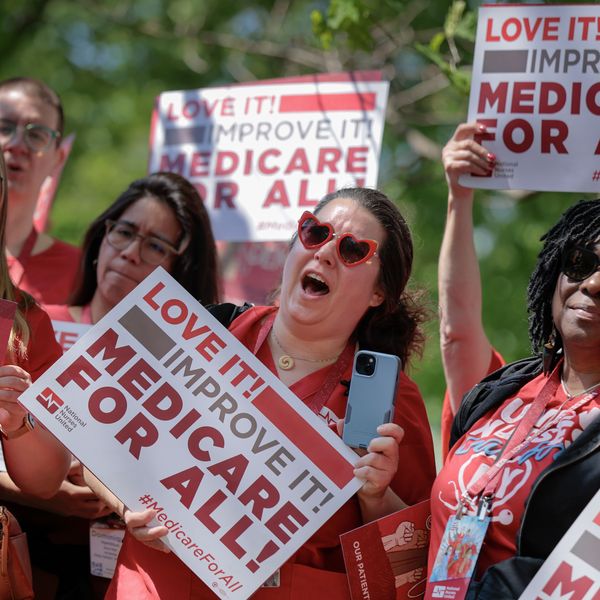"American passenger rail is in the midst of a renaissance," says a news report that urges the completion of a national rail plan.
Released on Friday from the Brookings Institution, the report shows that ridership on Amtrak, the primary rail carrier, is booming--up 55 percent since 1997. Ridership is at an all-time high, with over 31 million Amtrak riders a year.
"In order for metropolitan areas to compete, they have to be able to provide several different options for people in how they get around, for how business leaders are going to connect with other business leaders in different metropolitan areas and then how these regions are going to grow in the future," said report co-author Robert Puentes. "We are seeing continued congestion on the roadways, perhaps deterioration of the roadways in some cases, frustration with the airlines and looking at Amtrak as a potential alternative to some of the other modes."
The bulk of the ridership, nearly 90 percent, takes place in the 100 largest metropolitan areas. The northeast has the biggest share of ridership at just over 49 percent.
Dominating Amtrak's use and growth are short (400 miles or less) routes, which the report refers to as "the engines of Amtrak ridership."
Despite calls for fiscal austerity, the report authors write that rail and operations "investments are as important as ever," and investments by states can be key. From the report:
Ultimately, Washington should create a dedicated and sustainable source of funding for intermetropolitan passenger rail. A recent report from the Eno Center for Transportation found that although 85 percent of Amtrak's operating budget is derived from non-federal sources like ticket sales, the remaining contributions are annual, highly politicized battles. A dedicated source of funding, such as a ticket tax, would provide at least a small share of the annual stability that Amtrak's supporters demand. For their part, states support passenger rail through a variety of sources, including annual appropriations. A better approach would be a dedicated state trust fund-style source fed by a direct source, such as a portion of vehicle sales tax, ticket tax, or car rental fees.
The authors conclude that "passenger rail in the United States is on the track to success," and
The upcoming reauthorization and finalization of a national rail plan on the federal level, coupled with increased attention on the role of passenger rail in states, make this the right time to focus on the future of Amtrak, despite the fiscally constrained times.
Read the whole report here (pdf).
_________________________________


